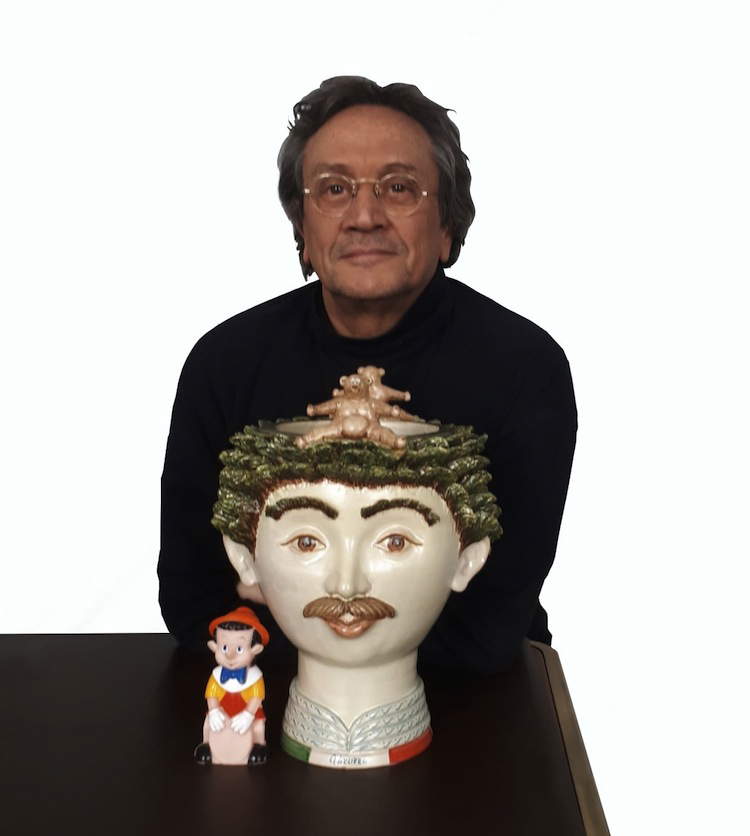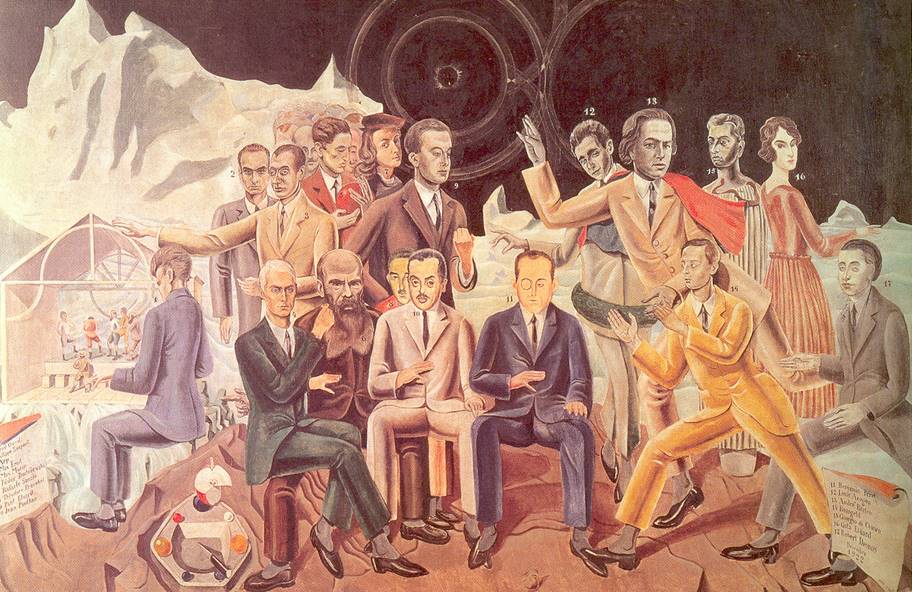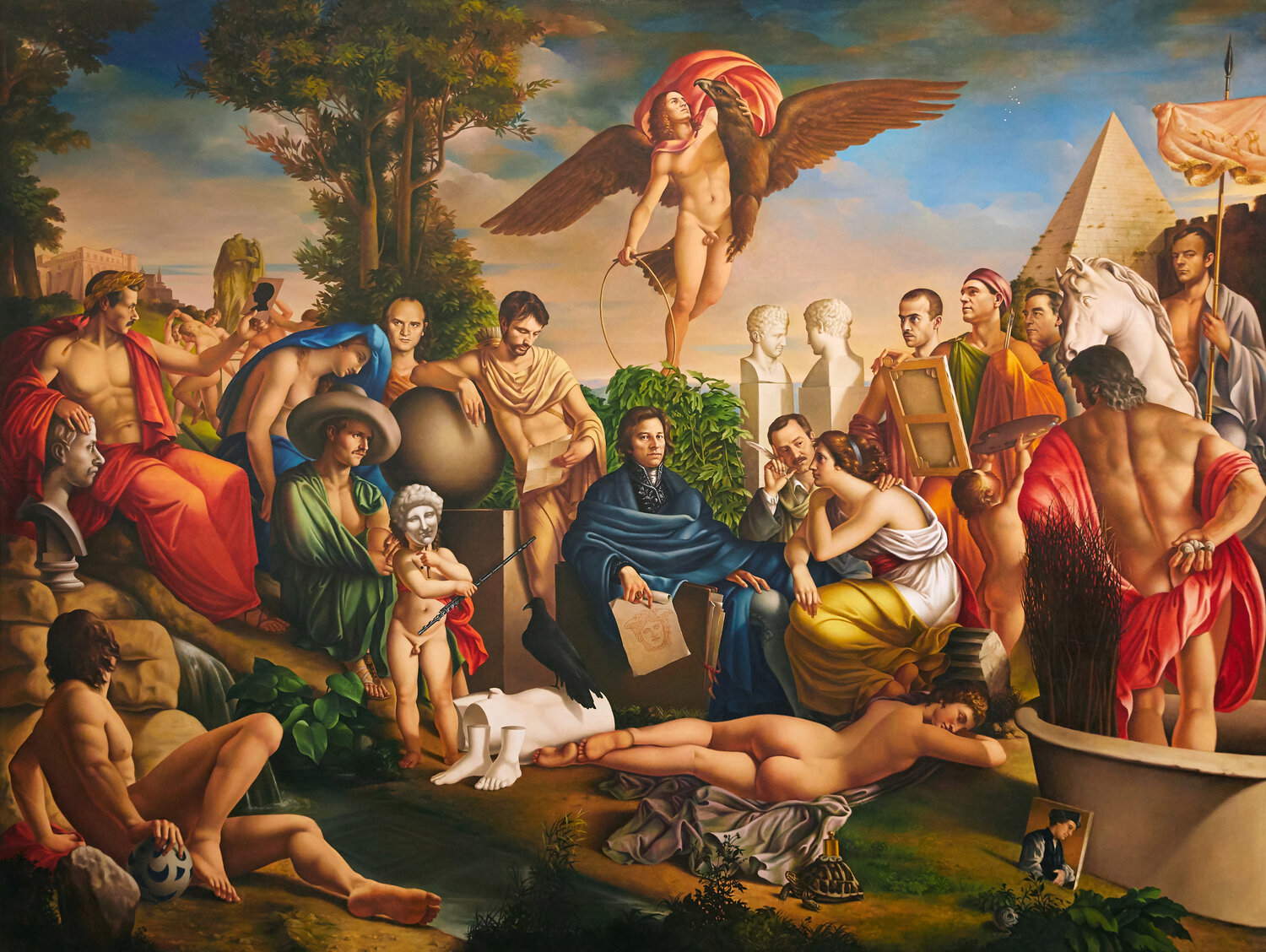"So many art fairs lead to a crisis in the availability of quality works." Giacinto Di Pietrantonio speaks
In recent years, the contemporary art market has been dominated by fairs: there are more and more of them, and more and more galleries are participating, often offering new works in a steady stream. What are the consequences of this situation? How do they affect the work of artists? Has there ever been a time in history when the market had all this importance? We discuss this in this interview with critic Giacinto Di Pietrantonio.
LR. If between the 1990s and 2000s there was a growth of the market, in the last fifteen years we are witnessing the “domination of modern and contemporary art fairs.” The fairs represent a kind of “all-inclusive vacation package” where in three or four days the collector can see a kind of “diffuse art biennial” where he or she can visit the fair and a whole series of side events made up of special exhibitions, parties, meetings, and dinners. During the normal annual schedule, visiting individual galleries is disincentivized by the fact that in the few days of the fair I can “see all the galleries” (albeit badly) and have a nice mini-vacation. Do you have a perception of this phenomenon?
GDP: Yes this is a phenomenon that began as early as the 1980s, when the art market began to take over the appreciation and affirmation of artists until then almost entirely the preserve of critics, art historians, museums, biennials, and so on. Consider the fact that, while until the 1970s, except in rare cases, an artist achieved fame over the course of years, from the late 1970s-early 1980s artists become known within one or two years, and, an even newer fact, is that at the same time their quotations soar. This underscores another new fact, namely that the gallerist is given a power of evaluation that he never had before. To better explain this, one has to turn to works of art, in this case Max Ernst’s Au rendez-vous des amis, 1922, housed at the Ludwig Museum in Cologne, and Carlo Maria Mariani’s The Lion Constellation, 1980-1981, housed at the Galleria d’Arte Moderna in Rome, which are paradigms of two precise historical moments: that of modernity in the former and postmodernity in the latter. The two works have a similar structure, that is, they both depict a group of people, but while in the former, Surrealist, we find painted there only the Surrealist artists and poets plus their mentor Breton, as well as some landmark figures such as Dostoevsky and Raphael, in the second, in addition to the artists of that time such as the poverists Kounellis, Merz, Paolini or De Dominicis, Ontani, Pisani, Twombly and, among others, Clemente, Chia and Mariani himself, or critics such as Bonito Oliva or Italo Mussa, also the gallery owners Paul Maenz, Mario Diacono and Gian Enzo Sperone. And here it gets complicated, because the latter are not only depicted, but they are centrally and courtly depicted. Paul Maenz is depicted with Goethe’s hat on his head on the left, Mario Deacon in the center as a philosopher, and to the right of this little group Gian Enzo Sperone painted as an Apollo or Hermes leaning against Goethe’s sculpture The Stone of Fortune that is in his Weimar home.
What does this tell us?
It tells us that while in Max Ernst’s time of modernity the market was taboo, it was not represented, and everything was played out within the cultural relationships of artists, writers, poets, intellectuals, in postmodernism the gallery merchants find not only a place, but they find it in a courtly way by being represented as poets, philosophers, deities. Some fifteen years ago I spoke to Mariani and Sperone about this to confirm it, they told me they had never read it that way. However, this tells us even more, in that the artist Mariani represented the market in this work in a spontaneous way, because there were no longer the vetoes against the market which was implicitly being given a value importance that it had never had until then. So what was happening, and will be reinforced especially from the 1990s onward, was happening with the complicity of the artists who consciously or unconsciously endorse what is happening around them and what they need. I give another example, I can’t remember if Lawrence Weiner or John Baldessari, in an interview, says that they, when they started doing the conceptual art that nobody wanted, they felt they needed to find galleries and gallerists, but since they couldn’t find any they went out of their way to create them. So blame or credit is never on one side, we are all connected and therefore co-responsible.
How are these dynamics affecting artists and the quality of artworks?
Going back to the market and fairs, it is partially true what you say and that is that fairs, like auctions I would add, today have an importance they never had before, but on the other hand the art system has in recent years reshaped itself in favor of the market, taking power away from critics and curatorship. Witness to this fact is also that the art magazine, which used to keep itself away from the market, is now itself a market player by organizing fairs, the example of Frieze magazine organizing Frieze Art Fair applies to all, and in some cases it is known more as a fair organizer than as a magazine. Now it is clear that this proliferation of fairs has led to a crisis in the availability of quality artworks, because, as several artists tell me, they are put under pressure by gallery owners who are constantly asking for new works to take to fairs. If you think that a level gallery today participates in a dozen or so fairs around the world you can understand what I am saying. The fairs themselves have become aware of this, and in fact there is no self-respecting fair today that does not have “side events” where a selection of artists are invited to present particular works that in most cases are large works as is the case at Unlimited for Art Basel. Not to mention the various awards, lectures and whatnot. A side dish that one would like to be more delicious than the dish. All this is not divorced from reality as it fits into the globalized world where finance has taken over everything.
How to get out of it?
I don’t know. I know for sure that only artists, when they want to, can show us the way.


During the COVID period, the thermometer for measuring the well-being of the art system seemed to be whether or not fairs were open. At the same time, large art exhibitions, such as Biennials and similar shows, are increasingly chaotic events with hundreds of artists where it is difficult to navigate and where there is always everything and the opposite of everything. Do you think there is a need for a “compass,” an “in-between place,” away from the market and the chaos of large exhibitions, to help quality and thus ultimately also the commercial success of contemporary?
I do not think it is entirely accurate to say that during Covid the thermometer for measuring the well-being of art was whether or not fairs were open. In fact, beyond that terrible experience that Covid had put us in, there were many who saw the confinement of quarantine as an opportunity to have time to rethink their work, meditate on their existence. Of course, the effects of what happened on art and life have not yet been seen, perhaps partly because they are always sought in the same places, artists and people, but I believe they will come to be felt and seen. That said, I am not against great exhibitions, but against exhibitions done well and those done badly. In fact, there is a widespread belief that “great exhibitions” or great reviews do not do justice to art, which is not true. It depends on how they are done, of course maybe not everyone gets to see everything, but then again in the globalized world we live in how do you make a world representative exhibition like the Biennale or Documenta with just a few artists? The issue here is curation, the works you choose and how you exhibit them and why. On the other hand, an exhibition like the Biennale, lasting almost six months, makes it possible to return to it again and again, as opposed to a fair that runs out in four or however few days. Of course, if we expect novelties from art in a stylistic-formal sense, I quite agree that these are not the right times, living in an era of neo-mannerism, but I believe that, in the so-called communication and information society in which we live, theart, as opposed to the modern period, has given itself the task of communicating content not on the search for novelty within the language of art, but, for better or worse, on the various issues of the world such as ethics, morality, ecology, racism and so on, issues to communicate which artists use the well-known signs at the most appropriate time. I mean that at the moment the search for or invention of the sign is somewhat secondary to what one wants to communicate so ready-made signs are used, because Macchiavellianly the end justifies the means. By this I am not saying that it is all doom and gloom, because here again one has to distinguish between strong and weak works, and in some ways this is more difficult than in the case of works that put or put formal novelty first, which is an issue roughly of the last 150 years, taking into account that, for example in the Renaissance, it was not that it was worth who did a new thing, but who did it better. This is also why, for example, when young Michelangelo sculpts a fake Greek putto and sells it, when he is later found out it is not that they persecute him, in fact the admiration for him grows even more, because he had shown that he could do like the Greeks or better than them.
Warning: the translation into English of the original Italian article was created using automatic tools. We undertake to review all articles, but we do not guarantee the total absence of inaccuracies in the translation due to the program. You can find the original by clicking on the ITA button. If you find any mistake,please contact us.




























